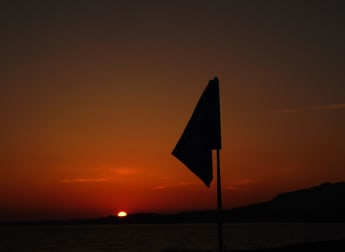The burning £750,000 question this week is perfectly straightforward: can another European golfer plot his way around the Championship links at Carnoustie, treading in the footprints of Scotland’s Paul Lawrie, to become the first player with a European passport to win a Major title in eight years?
The question is relevant for one very obvious reason – it was at Carnoustie in 1999 that Lawrie wrote his name into the history books by coming from ten shots behind going into the final round to force a play-off with Justin Leonard and Jean Van de Velde. Lawrie birdied the last two holes of the four-hole shoot-out to claim The Open Championship for Europe, Scotland and his beloved native city of Aberdeen.
Since then, European Tour Members have gone on to record brilliant victories in the Major Championships – notably Ernie Els in The Open at Muirfield in 2002, Michael Campbell, Retief Goosen and most recently, Angel Cabrera, in US Open Championships, and Vijay Singh in the US PGA Championship.
However Europe, as a Continent, is still awaiting an answer to the question posed above. Several have come close – very close in some cases – but as yet no-one has equalled or surpassed Lawrie’s towering achievement from Carnoustie back in 1999.
The venue is deservedly regarded as one of the world’s greatest examinations of links golf, with luminaries such as Henry Cotton, Ben Hogan, Gary Player and Tom Watson on Carnoustie’s Open Roll of Honour. Eight years ago Lawrie won £350,000 for his life-changing moment, while the 2007 Champion will pocket £750,000 from a total prize fund of £4.2 million.
Almost without exception, the 156 players who peg up their ball on Thursday would forego any monetary gains in exchange for the glittering Claret Jug. The prize counts immeasurably more than the money.
Some may remember the brutally tough conditions from 1999, others may recall a certain Frenchman, Van de Velde, paddling in the Barry Burn and racking up a triple bogey seven at the 72nd and last hole. Many still savour the misty-eyed moment when Lawrie, an unassuming and hard working professional from 50 miles up Scotland’s north-east coast, lifted the Claret Jug aloft.
Now 38, Lawrie returns to the scene of his triumph with his personal memory bank in overdrive at the prospect of the tackling the vast tract of Tayside duneland, which had its first recorded mention of “gowf” almost half a millennium ago in 1527.
Recalling that day to The Scotsman newspaper, Lawrie said: “My recollection is that I was 23rd going into the final round. I began ten shots behind Jean and my tee off was around 11am. When I was driving to Carnoustie from Aberdeen I was thinking that a top ten finish was a very real goal.
“Truthfully, I wasn’t thinking about the Claret Jug. How could I? But the further round I went, the more I moved forward. I was exempt for the Masters, then the following year’s Open, then, all of a sudden, there was an opportunity to become Champion.
“I think an hour and a half elapsed before the start of the play-off. What sticks in my mind after all the commotion at that (18th) hole was Jean making a hell of an up and down for seven. (But) when it was time for the play-off I was ready to go.
“As a Scot, I was aware of the support, which was brilliant. They wanted one of their own to win. Closing the deal is one of the biggest parts of being a professional golfer. When my time came, I did what I had to do.”
As ever, The Open brings together the best of the best, with new dad and World Number One Tiger Woods aiming to become the first golfer since Peter Thomson (1954, 1955 and 1956) to win three titles in succession.
World Number Two Phil Mickelson sets out with the goal of moving into illustrious company by tacking the world’s oldest Major onto his two Masters titles and one US PGA Championship, while World Number Three Jim Furyk seeks another Open title to add to his US Open Championship.
Mickelson visited Carnoustie prior to competing in The Barclays Scottish Open and, like many of his peers, was bowled over by the Angus links. He said: “It’s a wonderful golf course. My recollection wasn’t very high last time I was there, but I came back and really enjoyed it. I think everything about it is terrific – the course, the hotel, the town of Carnoustie. Everything around the area is spectacular.”
Els, the Champion in 2002 and runner-up to Todd Hamilton after a play-off two years later, believes he is coming into form at the right time. As a regular competitor in the Alfred Dunhill Links Championship, he knows Carnoustie’s secrets and decided not to make an advance visit. He said: “The rough is not as bad as last time. I think they are giving us some breathing space.”
From a European Tour perspective, The 136th Open augurs well. Cabrera became the first Argentine winner of a Major for 40 years when he captured the US Open Championship at Oakmont Country Club last month, with Sweden’s Niclas Fasth fourth, England’s Nick Dougherty tied seventh and his fellow countrymen Paul Casey and Justin Rose tied tenth.
Prior to that, American Zach Johnson won the Masters Tournament, with Goosen sharing second place, Rose tied fifth, Padraig Harrington of Ireland tied seventh and Casey and Luke Donald of England in tied tenth.
One of the forgotten facts from 1999 is that Cabrera actually had a putt to join the other trio in the play-off at Carnoustie, and the Argentinian arrives at The Open riding a wave of confidence after his success at Oakmont.
“Mentally, winning a Major does give you a lot of confidence” he said. “I now know that I can beat the best players in the world and that I can win Major Championships. I feel that I can win The Open on certain golf courses – and I think I have a chance at Carnoustie.”
Carnoustie hosted its first Open Championship in 1931, won by Edinburgh-born Tommy Armour but an American citizen by then. The 1936 Championship was played in appalling weather and Cotton’s final round of 71 in torrential rain was rated as one of the finest ever seen in The Open.
Hogan’s sole appearance in The Open was at Carnoustie in 1953 and he arrived early to prepare for the challenge, a tactic that paid off handsomely with neatly descending rounds of 73-71-70-68 for a win by four shots. He had already won that year’s Masters Tournament and US Open Championship, but could not get back to America in time to compete in the US PGA Championship.
Gary Player was the winner when Carnoustie next hosted the Championship in 1968, his one over par total beating Jack Nicklaus and Bob Charles into second place by two shots.
The first of Tom Watson’s five Open triumphs was gained at Carnoustie in 1975, but he had to play an extra 18 holes to wrest the title from Australian Jack Newton, who had given himself a valuable lead with a third round 65. Watson birdied the final hole of the fourth round to tie and went on the next day to record a one-shot victory in the play-off.
After a gap of 24 years the Championship returned to Tayside in 1999. The rest, as they say, is history.







